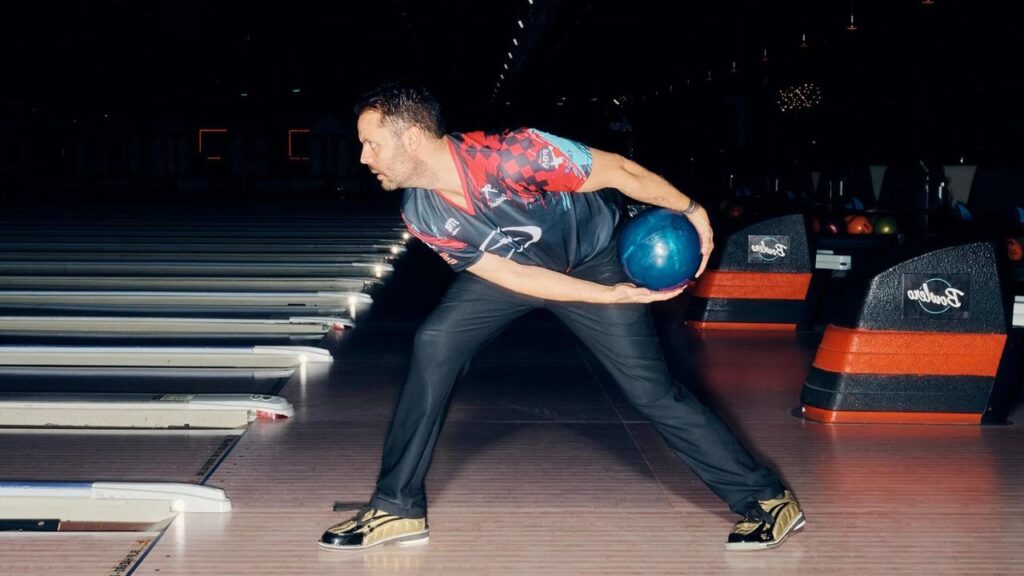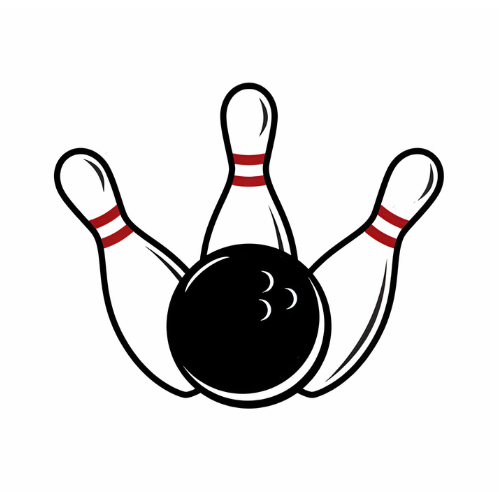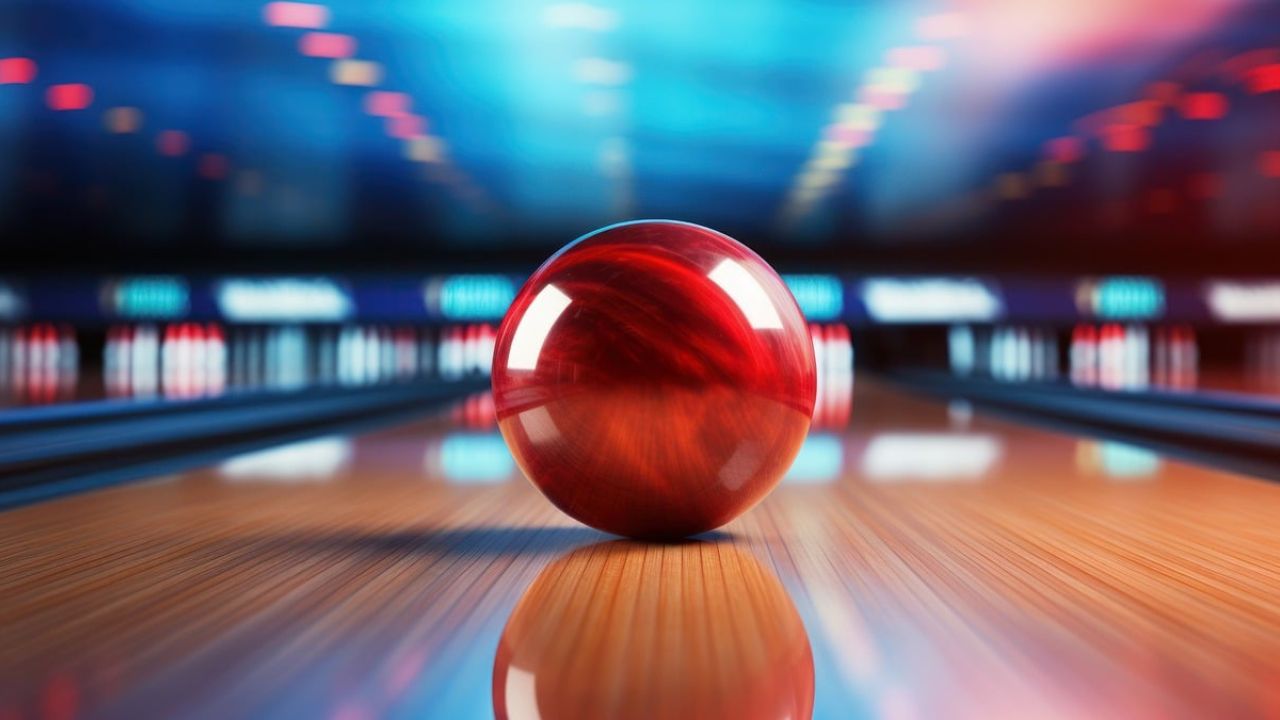Homemade bowling ball polish can revive your ball’s performance with minimal expense. It’s easy to make using simple ingredients like water, rubbing alcohol, and dish soap.
Creating your own bowling ball polish is a cost-effective solution for maintaining the shine and reaction of your ball on the lanes. Not only does a well-polished ball glide better, but it also retains its hook potential, ensuring your game stays on point.
With a few household items, you can concoct a reliable polish that rivals store-bought options. Regular maintenance of your bowling ball with your homemade solution will keep it in top condition, saving you money and trips to the pro shop.
Whether you’re an avid bowler looking to enhance your ball’s longevity or simply seeking an accessible DIY method, homemade polish can be a game-changer. Keep in mind to check with your bowling league’s rules regarding the use of homemade polishes during sanctioned events to avoid any breaches of regulations.

Introduction To Bowling Ball Maintenance
Keeping a bowling ball in top condition is crucial for the competitive player and hobbyist alike. A well-maintained ball can enhance performance and increase scores. The right maintenance routine extends the ball’s life and keeps you rolling strikes. It’s essential to grasp the basics of ball care which includes cleaning, sanding, and polishing.
The Importance Of A Well-maintained Bowling Ball
Clean equipment performs better. That’s a fact in bowling, just as it is in any sport. Dirt, oil, and lane conditioner can alter a ball’s surface, affecting its reaction on the lane. A routine cleanup prevents buildup and ensures consistent performance. Regular maintenance not only improves your game but also saves you money by reducing the frequency of costly ball replacements.
- Consistent Ball Motion: Clean balls have predictable paths.
- Better Hook Potential: Remove grime to maintain grip.
- Increase Lifespan: Regular care means longer life for your ball.
Overview Of Bowling Ball Polishing
Polishing a bowling ball restores its shine and optimizes its motion down the lane. Whether you seek a smooth glide or a sharp hook, polishing can fine-tune your ball’s surface to your style. Homemade polishes offer a cost-effective, personalized solution compared to commercial products.
| Polish Type | Benefits | When to Use |
|---|---|---|
| Homemade Polish | Cost-effective, Customizable | Regular maintenance or before a game |
| Commercial Polish | Convenient, Pre-formulated | Quick fixes or as recommended |
You don’t need costly products to maintain your bowling ball. Simple ingredients from home can work wonders. With the right technique and a DIY polish, your ball will stay in pristine condition. Stay tuned for tips on crafting your own potion to give your bowling ball a gleaming finish!
Understanding Bowling Ball Polish
Keeping your bowling ball polished is key for peak performance. A smooth, shiny surface means less friction. Less friction lets the ball roll straight and true. Regular polish also keeps the ball looking new. Knowing when and how to polish is just as important as the polish itself.
Components Of Commercial Bowling Ball Polishes
Commercial polishes have special ingredients. These ingredients help your ball glide on the lanes.
- Solvents clean the ball’s surface.
- Abrasives smooth out scratches.
- Conditioning agents add shine and protect.
These components work together to improve your ball’s performance. They make the ball’s surface sleek and responsive. Always check the label to ensure compatibility with your ball.
Benefits Of Polishing Your Bowling Ball
A well-polished ball has many benefits:
- Better performance: A polished ball moves faster and more predictably.
- Extended lifespan: Regular maintenance prevents early wear and tear.
- Enhanced appearance: A shiny ball looks professional and impressive.
Polishing is an easy way to keep your game on point.
When To Polish Your Bowling Ball
Knowing the right time to polish is important. Here’s a simple guide:
| Ball Usage | Polish Frequency |
|---|---|
| Regular league play | Every 5-10 games |
| Occasional bowling | Every 15-20 games |
| Heavy oil conditions | After every session |
Follow these guidelines to keep your ball in top shape. Look for dull spots or loss in performance as signs it’s time for a polish.
Creating Your Own Bowling Ball Polish
Bowling enthusiasts understand the importance of a well-polished ball. It isn’t just about the shine; it’s about performance. A smooth ball ensures a consistent roll and better control down the lane. Instead of buying expensive polishes, crafting a homemade version might be the perfect strike!
Necessary Ingredients And Materials
To get started, gather these simple items:
- Distilled water: It’s pure and will not leave residue on the ball.
- Isopropyl alcohol (rubbing alcohol): For cleaning and drying fast.
- Polishing compound: To create the shine you want.
- Bowling ball cleaner (optional): For extra cleaning power.
- Microfiber towels: For applying the polish without scratching.
- A clean spray bottle: To store and apply your mix.
Step-by-step Guide To Making Homemade Polish
Follow these easy steps to create your polish:
- Fill the spray bottle halfway with distilled water.
- Add equal parts of isopropyl alcohol.
- Pour in a small amount of the polishing compound. Any excess can make the ball greasy.
- If chosen, add a few drops of bowling ball cleaner.
- Shake the bottle vigorously to mix all ingredients.
- Label the bottle for easy identification.
Tips For Effective Application
For the best results, remember these tips:
- Clean your ball: Remove all dirt and oil before polishing.
- Shake the mixture: Do this before every use to keep ingredients mixed.
- Spray sparingly: Too much can make the lane slick and affect the ball’s movement.
- Use a microfiber towel to apply the polish in a circular motion.
- Allow it to dry for a consistent, smooth surface.
Comparison: Homemade Vs Commercial Polishes
When it’s time to shine your bowling ball, you face a choice. Will you buy a polish or make one at home? Let’s compare homemade and commercial bowling ball polishes to see which might be the better pick for you.
Evaluating The Cost-effectiveness
The price of ingredients versus store-bought polish often tips the scale. Here’s a quick look at the economics.
| Polish Type | Cost per Use |
|---|---|
| Homemade | Lesser |
| Commercial | Higher |
Making a polish at home can save you money. Grabbing a bottle off the shelf costs more.
Analyzing The Performance Difference
- Commercial polishes are designed for consistency.
- Homemade polishes vary in performance based on the mix.
Not all formulas work the same. Understanding ingredients is key.
Pros And Cons Of Homemade Polish
Let’s weigh the ups and downs of choosing a DIY approach.
| Pros | Cons |
|---|---|
| Cost savings | Variable results |
| Custom blends | Time investment |
| Eco-friendly choices | Learning curve |
Homemade polishes shine in affordability and eco-friendly options. Yet, they require time and know-how for effective use.
Maintaining Your Bowling Ball Post-polish
Once your homemade bowling ball polish brings out the shine, preserve it with smart upkeep. Proper maintenance ensures the ball rolls smoothly. Longevity and peak performance become the rewards of your efforts. Let’s dive into keeping that polished look long-term.
Regular Cleaning Routine After Polishing
Keep your bowling ball in top condition by cleaning it after every session. Dirt and oil can dull its polished surface. A simple wipe-down can make a huge difference.
- Use a microfiber cloth to remove lane oils after every game.
- Apply a cleaner approved for polished balls to cleanse the surface.
- Rub in a circular motion, ensuring even coverage over the entire ball.
- Dry thoroughly with another clean cloth to prevent residue build-up.
Storing Your Bowling Ball To Retain Shine
To protect the shine, store your bowling ball properly. Avoid places with extreme temperatures. Use the right bag to prevent scratches or other damage.
| Storage Tip | How It Helps |
|---|---|
| Avoid direct sunlight | Prevents fading and cracking |
| Keep in a bowling bag | Shields from dust and drops |
| Cushion around the ball | Avoids unwanted movement |
Long-term Care Strategies
Extend your bowling ball’s lifespan with these long-term care strategies. Balance is key for a ball that always performs.
- Resurface regularly: Return to a smooth finish every 60 games.
- Deep clean annually: Remove hidden grime with a pro shop treatment.
- Rotate balls: Reduce wear by switching between several balls.
Success Stories And Best Practices
Discover the magic that homemade bowling ball polishes bring to the game. Sparkling performances often start with the shine of a ball. Many bowlers testify to the game-changing benefits, and there’s a wealth of best practices to explore. Let’s dive into the experiences and insider tips of those who’ve seen remarkable improvements.
Cases Of Improved Bowling Performance With Homemade Polishes
A noticeable trend among bowlers involves the use of homemade solutions for polishing. Such simple recipes often lead to impressive outcomes.
- Increased Accuracy: Bowlers report more consistent ball paths.
- Better Control: Users find managing ball spin becomes easier.
- Extended Ball Life: Homemade polishes protect the ball, leading to enhanced longevity.
Stories circulate within bowling communities of players climbing leaderboards after using DIY polishes.
Expert Opinions And Testimonials
Industry aficionados often recommend specific mixtures and techniques.
“Homemade polishes equalize the playing field, allowing bowlers of all levels to achieve a professional sheen without a hefty price tag,” states a pro shop owner.
Credible coaches back these sentiments with their committed support.
Common Mistakes To Avoid In Polishing
Polishing a bowling ball seems straightforward, yet some errors can reduce effectiveness.
| Mistake | Consequence | Correction |
|---|---|---|
| Using rough cloths | Can scratch the ball surface | Opt for a microfiber towel |
| Over-polishing | May cause the ball to over-react | Polish sparingly for optimal reaction |
| Ignoring the ball’s coverstock | Reduces the overall performance | Choose ingredients compatible with the coverstock type |
Steering clear of these pitfalls enhances polish effectiveness and preserves ball condition.
Advanced Bowling Ball Shine Techniques
Polishing a bowling ball demands skill, patience, and the right techniques. Giving your ball the perfect shine not only makes it look great but also can significantly affect performance. The right polish empowers the ball to glide smoothly on the lanes, allowing for precision and power with every roll. These advanced techniques will guide you to achieve an optimal shine, tailored to boost your game.
Integrating Homemade Polish In A Comprehensive Ball Care Regimen
Regular care extends the life of your bowling ball. Integrate homemade polish into your maintenance schedule. This not only keeps the ball glossy but also helps you grip and control it better. Use a soft, microfiber towel to apply polish gently in circular motions. Regular polishing, with deep cleaning sessions in between, ensures a consistent ball surface and a predictable path down the lanes.
Adjusting The Polish Mixture For Different Lane Conditions
- For oily lanes, use less polish; opt for a mixture that cleans without excessive slipperiness.
- For dry lanes, add a bit more polish to reduce friction and allow the ball to slide with greater ease.
- Test different ratios to find the perfect blend for your style and the prevailing lane conditions.
Innovative Methods Beyond Polishing To Enhance Ball Performance
Beyond polishing, there are innovative methods to boost bowling ball performance. Here are some to consider:
| Method | Benefit |
|---|---|
| Sanding | Adjusts ball’s grip on the lane |
| Baking | Extracts oil from the ball’s coverstock |
| Resurfacing | Restores the original surface texture |
These methods, combined with your custom polish, prepare you for any lane condition and competition level. Never underestimate the power of a well-maintained bowling ball. Use these advanced techniques to keep your game rolling at its best.
FAQ
What Can I Use To Polish My Bowling Ball?
To polish a bowling ball, use a specifically designed bowling ball cleaner or polish. Apply a small amount on a microfiber towel and rub the surface evenly in circular motions for best results.
What Is A Good Substitute For Bowling Ball Cleaner?
A suitable substitute for commercial bowling ball cleaner is a mixture of equal parts water and rubbing alcohol. Use a microfiber towel for application.
Can I Use Rubbing Alcohol To Clean My Bowling Ball?
Yes, you can use rubbing alcohol to clean your bowling ball. It effectively removes lane oils and grime without damaging the ball’s surface.
Can You Use Windex To Clean Bowling Ball?
No, using Windex on a bowling ball is not recommended as it may damage the surface or affect the ball’s performance.
Conclusion
Crafting your own bowling ball polish rewards both your game and your wallet. Embrace the art of DIY polish and watch your ball’s performance soar. Remember, the perfect blend is in your hands – unlock it and bowl your way to newfound brilliance.
Shine on and strike with confidence.

